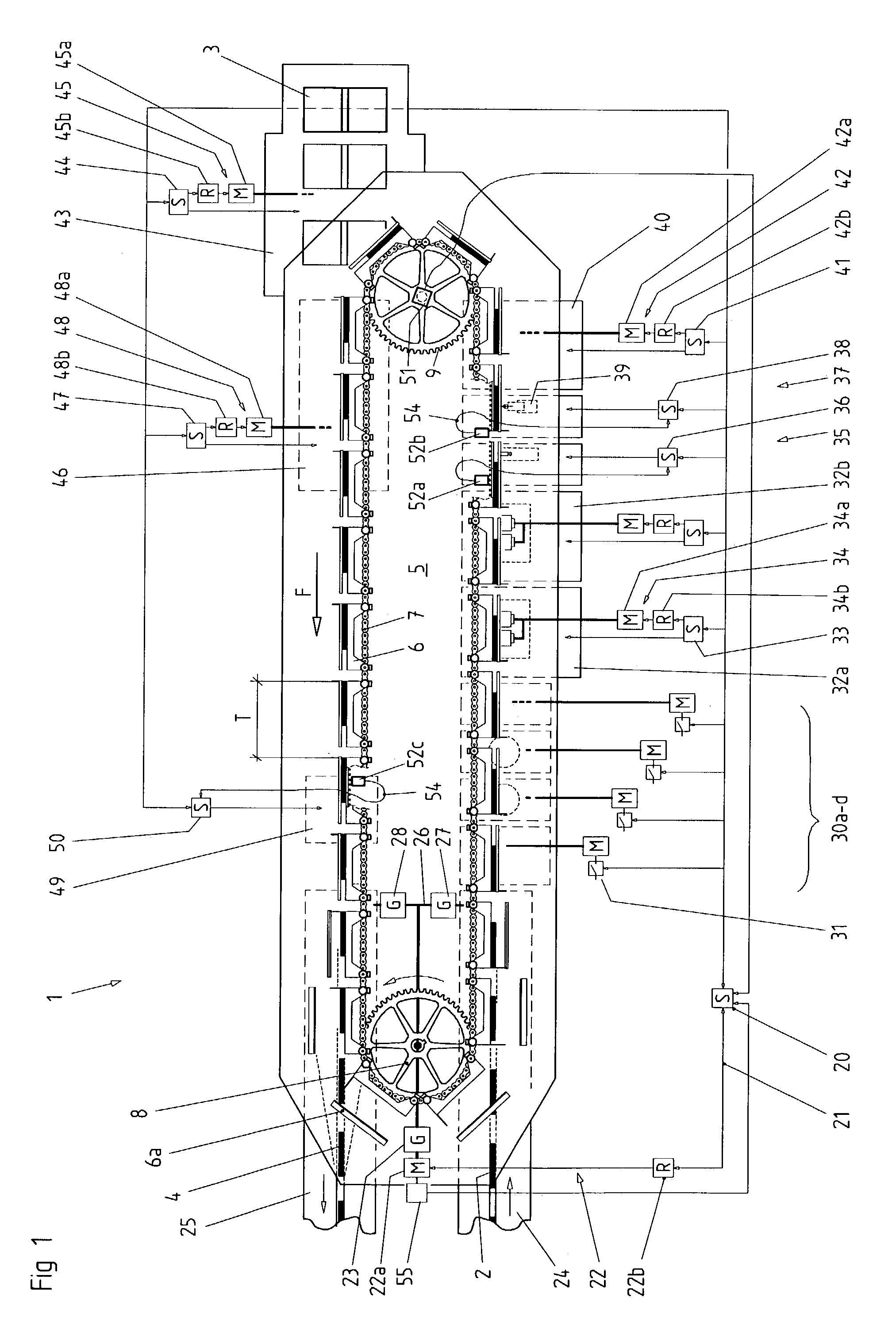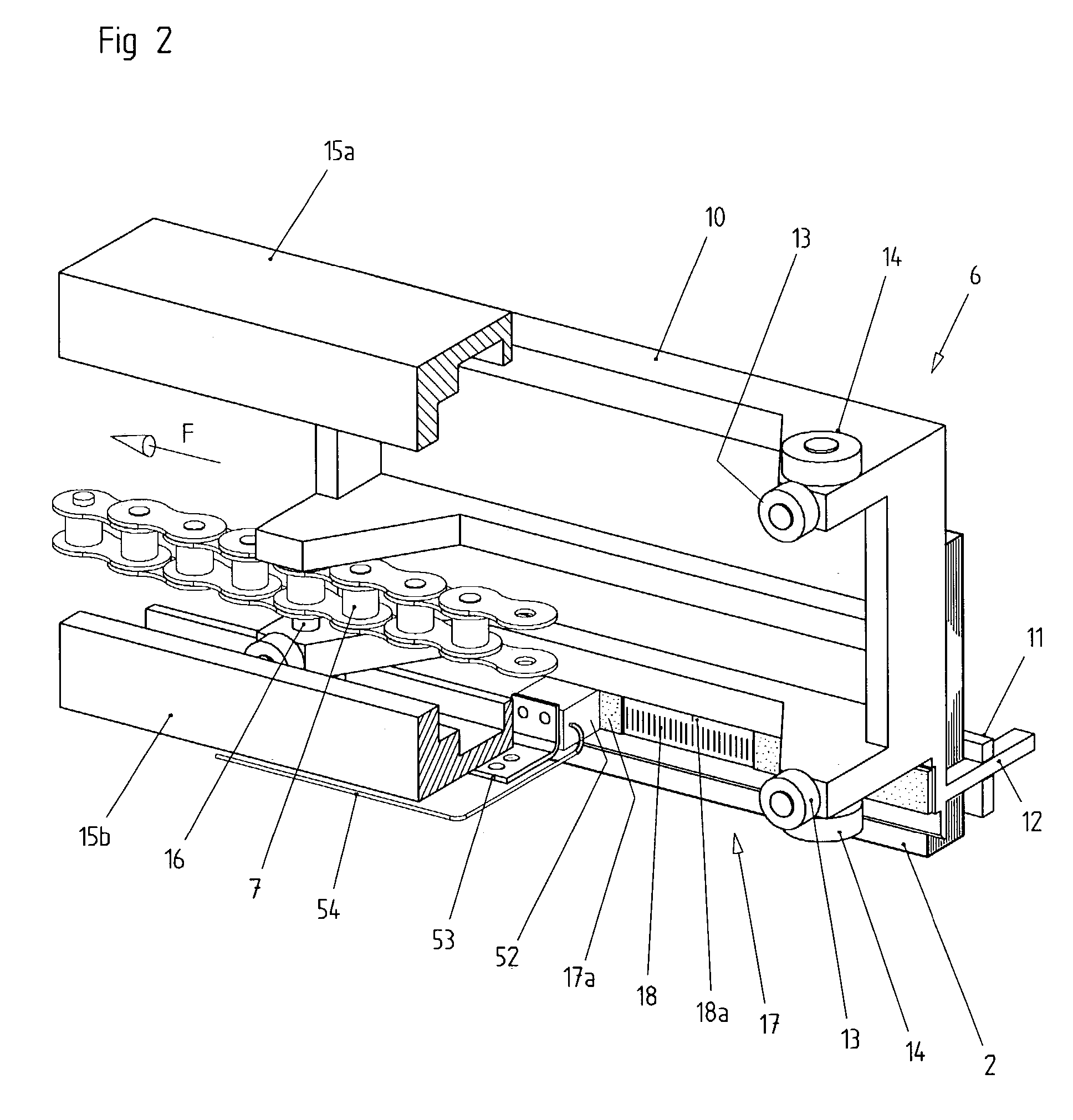Bookbinding machine
a bookbinding machine and roller chain technology, applied in the field of bookbinding machines, can solve the problems of unaccepted play in the drive link, limited space, and unfavorable use of roller chain sections, and achieve the effect of simple construction and precise positioning operation
- Summary
- Abstract
- Description
- Claims
- Application Information
AI Technical Summary
Benefits of technology
Problems solved by technology
Method used
Image
Examples
Embodiment Construction
[0019]An exemplary embodiment of a bookbinding machine 1 consists of a transport system 5 having a multiplicity of continuously movable inner-book clamps 6 articulated to a continuous roller chain 7 circulating in a closed track, spine-processing stations 30a–d and workstations 32, 35, 37, 40, 43 and 46 for carrying out positionally precise processing operations. Inner books 2 collated as loose sheets are bound in the bookbinding machine 1 and, in a processing variant, are finished as brochures 4 by the application of a jacket 3. The inner books 2 enter the bookbinding machine 1 while standing on their spines via an intake 24. They are transferred, while being aligned to a rear-edge stop 12, to the inner-book clamps 6 which, starting from an open position 6a, clamp the particular inner book 2 by its lateral faces with an inner jaw 10 and an outer jaw 11 closing relatively thereto. A given portion of the inner book projects downwardly from the inner-book clamp 6 for processing.
[0020]...
PUM
 Login to View More
Login to View More Abstract
Description
Claims
Application Information
 Login to View More
Login to View More - R&D
- Intellectual Property
- Life Sciences
- Materials
- Tech Scout
- Unparalleled Data Quality
- Higher Quality Content
- 60% Fewer Hallucinations
Browse by: Latest US Patents, China's latest patents, Technical Efficacy Thesaurus, Application Domain, Technology Topic, Popular Technical Reports.
© 2025 PatSnap. All rights reserved.Legal|Privacy policy|Modern Slavery Act Transparency Statement|Sitemap|About US| Contact US: help@patsnap.com



